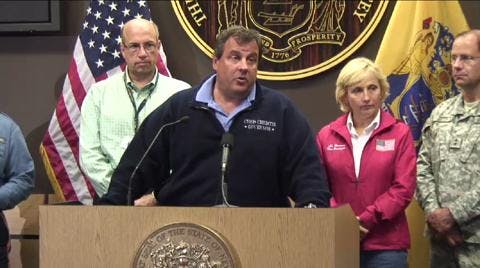I spent the weekend watching Hurricane Irene’s destructive trek up the Eastern Coast of the United States.
I checked hurricane maps, every news channel I could find and searched the web for the latest stories. I heard President Obama, New Jersey Governor Chris Christie, New York Mayor Michael Bloomberg, and others deliver the same message in their own style – “This is a crisis, pay attention, listen to what the experts say. Get food, evacuate, take precautions.”
To my ear, Gov. Christie stated the urgency of the moment most emphatically –“get the hell off the beaches now.” As I write this, throughout the East, property damage is high but loss of life lower than feared. The former was inevitable, the latter, fortunately, somewhat lessened as people followed basic instructions about what to do and where to go.
It’s hard to fake urgency and seriousness of purpose
Between peering at live weather maps and watching moment by moment conferences, I watched YouTube videos on hurricane preparation and visited other public sites giving detailed instructions about safety zones and what you have to have whenever there’s a natural disaster. Much of this has been available for a long time.
With such information and memories of Katrina’s devastation still fresh, why were all these warnings necessary, and why did they have to be repeated by multiple officials?
Some may say none of our leaders wanted to be charged with ignoring the crisis. Perhaps so; if you think that’s solely or even primarily the case, go back and look at their videos — it’s hard to fake the urgency and seriousness of purpose each communicated.
My guess is that they feared that without their own direct, passionate statements, many would have ignored the risks of the storm, assumed they were overblown and that they would be safe. They’d have toughed it out or done whatever they wanted. Many more would have died.
Our elected and public leaders understood how hard it would be to convince people to heed risk and pay attention. They knew that that would be harder to communicate than evacuation plans and safety steps once people realize there was a real crisis.
Lessons — and challenges — for business leaders
This is similar, but in some ways less complex, to the challenge organizational leaders face in trying to get people to take their values and corresponding behavioral standards seriously.
It’s not all that hard to gather information about ethical and workplace issues or figure out how to make it readily available via online networks, tablets and smartphones. In fact, terabytes of data designed to help prevent business disasters including fraud, discrimination, abusive and unsafe conduct, are as available as hurricane disaster tips and action plans. Try viewing all the YouTube videos on these topics and your senses will quickly dull.
Today’s challenge for business leaders is to persuade their teams to apply simple consistent standards of conduct — not once in the midst of an epic crisis, but rather, during daily ongoing and “routine” pressures. This is especially difficult when danger is not as apparent as that shown on radar maps and live videos of nearby and approaching winds and destruction.
Irene has left us a model for getting workplace attention. As an example, we can adapt what Gov. Christie said and apply his message sincerely and repeatedly to key values and topics – “I mean this, we mean this – do this now and keep the hell doing it.”
Standards, policies, case examples, and other learning tools would have a lot more meaning with clear, blunt and ongoing communications like this.
